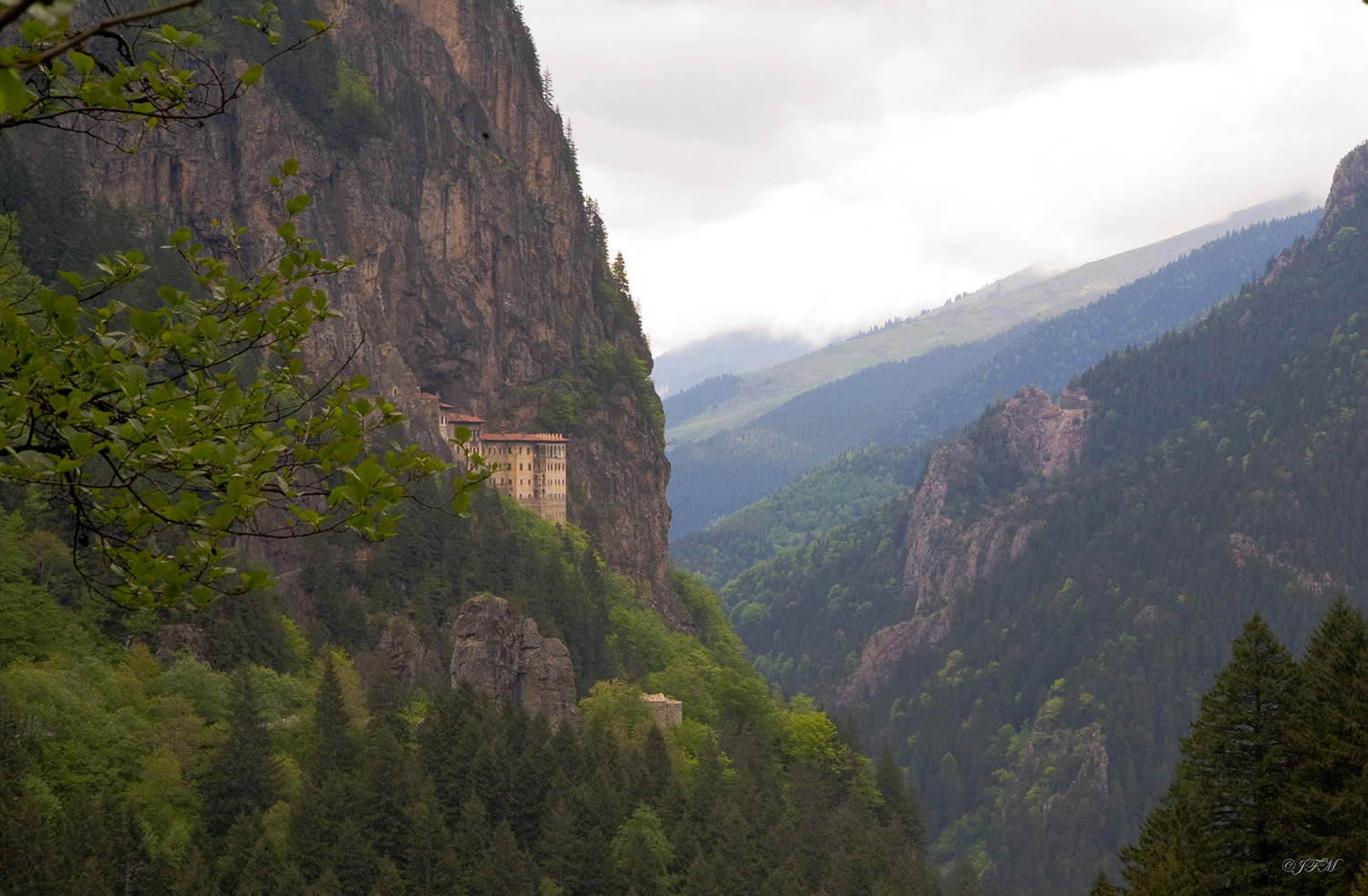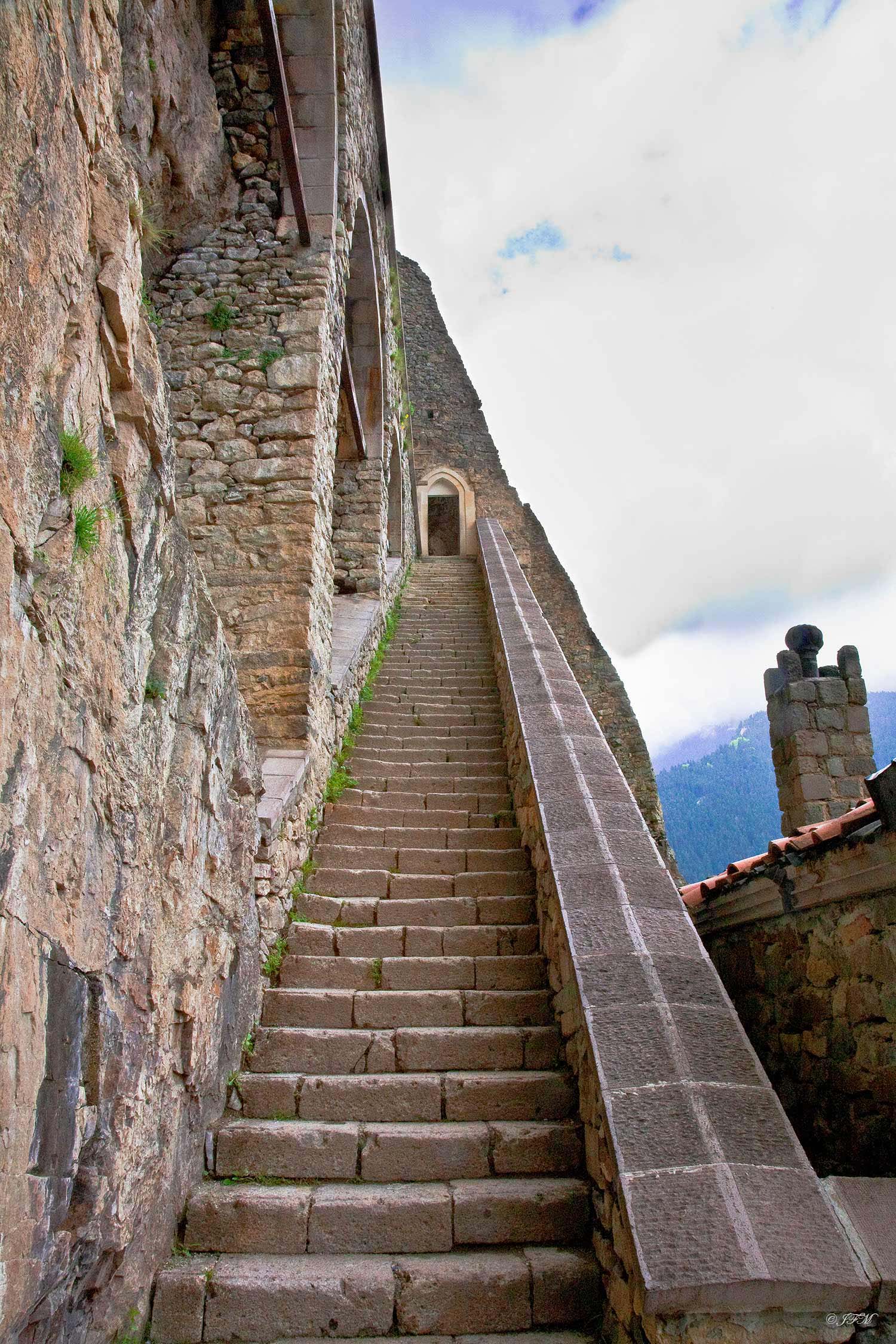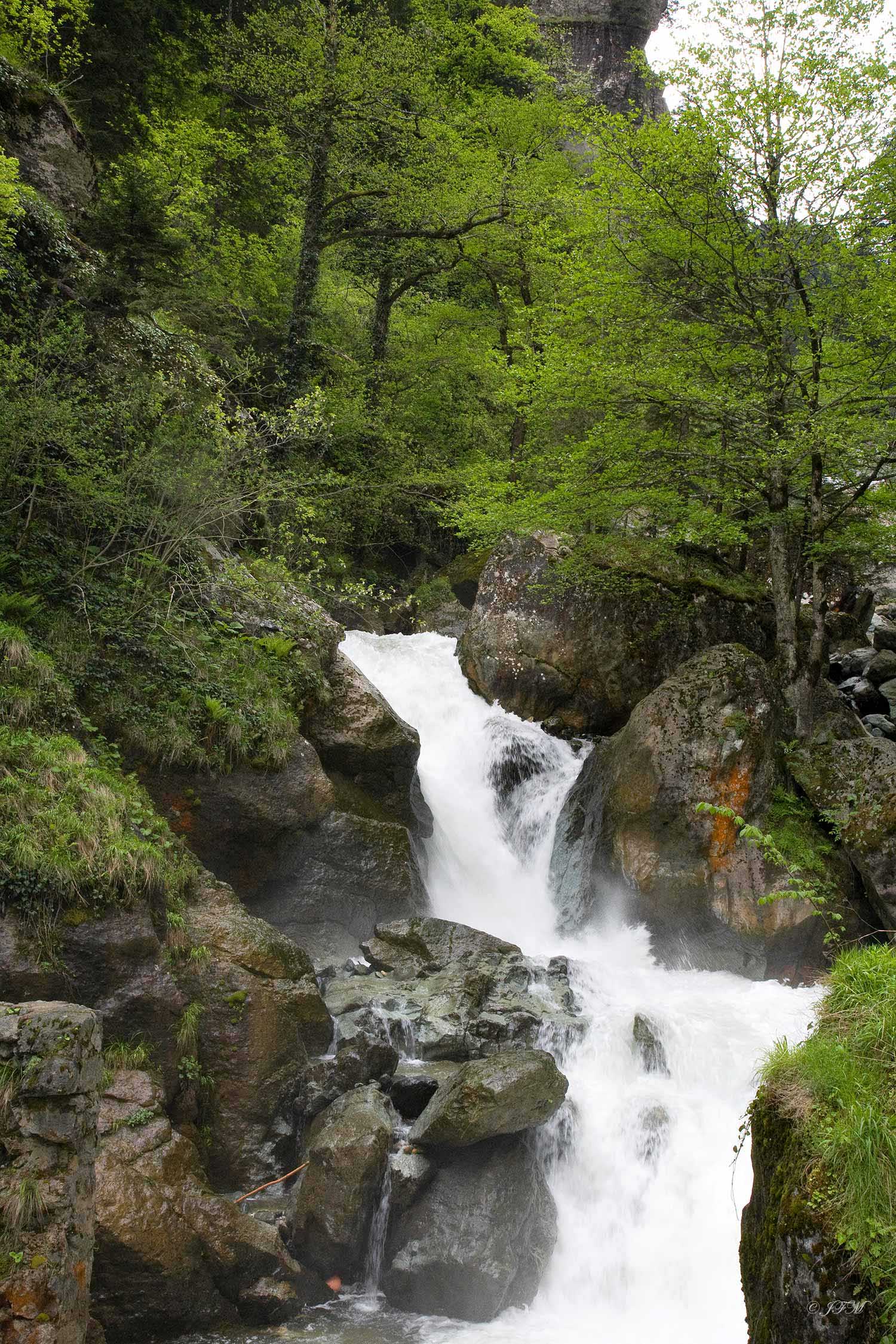
Sumela Manastiri on Mt. Mela
On the cliffs of Mt. Mela over looking the Altindere valley the 4th century Sumela Greek Monastery 34 miles SE outside of Trabzon, Turkey in Altindere National Park.

Gauntlet Sumela Manastiri
These stairs are the only entrance to the Monastery and a clever defense. No mater what the size of the attacking force only a two-man line could come up the stairs to gain entry. The stairway was a gauntlet the enemy had to traverse and they would suffer heavy losses. On the cliffs of Mt. Mela over looking the Altindere valley the 4th century Sumela Greek Monastery 34 miles SE outside of Trabzon, Turkey in Altindere National Park.

Altindere Valley Summer Pasturing
Turkish sheepherder moving flock into the mountains for summer pasturing. This is located in the Altindere valley on the road to the 4th century Sumela Greek Monastery 34 miles SE outside of Trabzon, Turkey in the Altindere National Park.

Mountain Stream
This is located in the Altindere valley on the road to the 4th century Sumela Greek Monastery 34 miles SE outside of Trabzon, Turkey in the Altindere National Park.

Oryantl Dansi
Kervansaray Night Club, Cumhuriyet Str., No: 30 Harbiye, Istanbul, Turkey. The “Belly Dance” has a different reference in Turkey. Turkish oriental dance is referred to in Turkey as Oryantal Dansi, or simply 'Oryantal'. The Turkish style of belly dance is lively and playful, with a greater outward projection of energy than the more contained Egyptian style. Turkish dancers are known for their energetic, athletic (even gymnastic) style, and their adept use of finger cymbals, also known as zils. Connoisseurs of Turkish dance often say a dancer who cannot play the zills is not an accomplished dancer. Floor work, which has been banned in Egypt since the mid-20th century, is still an important part of Turkish belly dance.
Another distinguishing element of Turkish style is the use of the Karsilama rhythm in a 9/8 time signature, counted as 12-34-56-789.
Many professional dancers and musicians in Turkey continue to be of Romani heritage, and the Roma people of Turkey have had a strong influence on the Turkish style (There is also a distinct Turkish Romani dance style which is different from Turkish Oriental).

Oryantl Dansi
Kervansaray Night Club, Cumhuriyet Str., No: 30 Harbiye, Istanbul, Turkey. The “Belly Dance” has a different reference in Turkey. Turkish oriental dance is referred to in Turkey as Oryantal Dansi, or simply 'Oryantal'. The Turkish style of belly dance is lively and playful, with a greater outward projection of energy than the more contained Egyptian style. Turkish dancers are known for their energetic, athletic (even gymnastic) style, and their adept use of finger cymbals, also known as zils. Connoisseurs of Turkish dance often say a dancer who cannot play the zills is not an accomplished dancer. Floor work, which has been banned in Egypt since the mid-20th century, is still an important part of Turkish belly dance.
Another distinguishing element of Turkish style is the use of the Karsilama rhythm in a 9/8 time signature, counted as 12-34-56-789.
Many professional dancers and musicians in Turkey continue to be of Romani heritage, and the Roma people of Turkey have had a strong influence on the Turkish style (There is also a distinct Turkish Romani dance style which is different from Turkish Oriental).
Turkey





